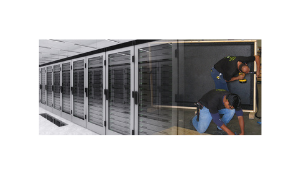A Day in the Life of a Server Rack Crate
16 March 2015

The job of a server rack crate is to protect your sensitive equipment through all the trials of transit. In fact, the familiar police motto “to serve and protect” describes the role precisely. At the beginning of it’s lifecycle, the crate undergoes custom design and engineering and is fitted with the right kind of wood, hardware and foam materials to hold up under severe challenges from the shipping environment.
» Read More 5 Things You Need to Know About Shipping Rack Server Crates
How it is designed
While the job of a crate is to protect valuable cargo from damage during shipping, the job of the packaging designer is to build a durable crate sufficient to withstand the challenges of travel. There are check points along the way that can determine a crate’s fate and a good designer knows what they are and builds his crates with these challenges in mind. For instance, before loading, it’s essential to check that the ramp being used is designed to facilitate the full weight of the load. If the weight exceeds 1750 pounds most crates will need metal runners to prevent damage to the casters or to the crate over time from vibration. To prevent tipping, the incline should never exceed a maximum slope of 5 degrees.
What Happens When it’s Shipped
When third parties are involved crates need be able to withstand improper or rough handling by a crew. After you release your crate into the supply chain, it is susceptible to all the vagaries of transit–not being strapped into trailers, improper forklift handling, dropping off of lift gates, etc. This means your racks need to be packed in quality crates with the proper material, foam and hardware to secure and protect them throughout the journey. When forklifts are engaged, the crate needs to be designed so that it can be placed up against the mast and straps can be employed. Best practices with lift gates include safety straps, removal of casters and securing the back truck wheels.
Since it’s often impossible to be present during these procedures, we suggest adding tilt and impact instrumentation both inside and outside of the crate.These instruments are also helpful in identifying road vibration due to potholes, sudden stops or other hazardous road conditions.
» Read More Protect Valuable Shipments with Tilt and Impact Indicators
How it’s Unloaded
The same care and handling rules apply to unloading once a destination is reached. Our experience has led us to design server rack crates that do not require special tools since they are often misplaced or lost during transit. We have also learned that frequently there is a shortage of personnel to assist with the off-loading process. As a result we design crates that are intuitive and can be moved quickly and successfully with limited resources.
What Happens to Used Crates
The best defense you can provide when shipping high value cargo is to invest upfront in well designed, durable, wooden shipping crates. A solidly built server rack crate can be reused several times actually reducing your cost per trip. As a crate reaches the end of it’s useful life though, you must consider the cost of disposal. This can always come as a surprise when it’s not factored into your initial budget. Be sure to plan ahead for the cost of recycling or discarding use crates after they’ve served their purpose to completion.
» Read More Use Cost-Per-Trip Model When Costing Out Wood Shipping Crates
{{cta(‘fd5476ec-6e06-4afd-8467-63f5554e512f’)}}
